|
Content Marketing World in Cleveland, Ohio was as much a conference about creativity as it was about marketing. Of course, there were lots of informative sessions that delved into specific strategies and tactics to help we content marketers do our jobs better. But the greatest value for me, personally, came in the moments when I was reminded that, as much as content marketing is a business endeavor, it’s an artistic one, too, and we must nurture that creativity to be really, really good at what we do. There are myriad challenges to creativity in the workplace — meetings, deadlines, business objectives, the bottom line, people not understanding what it is you do — the list is long. Creative professionals working in open offices have it especially hard. There are constant distractions and interruptions, and it can be impossible at times to make the brain space necessary for creative work. In his keynote, John Cleese — the man who brought us Monty Python, Fawlty Towers, and other comedic gems — called this brain space his “tortoise enclosure,” where he allows his thoughts to roam freely. If he starts thinking about his to-do list, he makes a mental note to take care of those things later. Cleese, who is well studied in the cognitive science of creativity, recommended we read Hare Brain, Tortoise Mind: Why Intelligence Increases When You Think Less by Guy Claxton. The idea is this: There are two kinds of thinking: one dependent on reason and logic, and one that’s less purposeful, it’s more playful, leisurely, and dreamy. In this mode, we are mulling things over, almost meditative, pondering a problem versus earnestly trying to solve it. [Claxton] says allowing the mind time to meander is not a luxury. You need the tortoise mind, such as Einstein described, as much as you need the hare brain.  I didn’t have to wait long to see an example of this in action. While I was at the conference, I was in my tortoise mind, absorbing all the new ideas swirling around me; my imagination was open to new possibilities and I was connecting dots in ways I hadn’t before. In that state of mind, I could get the most out of the conference. But, I had some things to take care of for work right after leaving Cleese’s keynote. As I walked back to my hotel, I prepared my mind for two hours of work. Switching to my hare brain, I organized my thoughts as I headed up the elevator. I ordered room service and started checking emails. Pretty quickly, I was able to sort out what needed to be taken care of right away, and what could wait. For the things that could wait, I scheduled time on my calendar. Looks like I’ll be working Saturday. Great. Then I knocked out the things that needed taking care of immediately, and had just enough time to eat and change before heading out to the Barenaked Ladies show. Saturday morning, back home in California, I was up early. (My brain was still on Eastern time.) I made some coffee and got to work. By the end of the day, I’d built an editorial calendar and written two press releases, two blog posts, and a newsletter. And in doing so, I’d come up with ways to incorporate many of the things I’d learned at Content Marketing World This was my hare brain in action. My tortoise brain had come up with ideas for applying my new learnings, and my hare brain organized and executed. But to get to the tortoise brain, I had to get out of my usual work environment. As I mentioned, I work in a noisy, open office full of distractions and interruptions. Cleese advised us to “get away from interruptions and see what happens.“ That Saturday morning, I was in the peace and quiet of my own home, the only noises the clacking of keys and the snoring of my cat next to me. And I got more done in one day than I normally could in a week at the office. I’ve written before about the value of left brain/right brain switching, but now I’m going to make an effort to practice switching between my hare brain and my tortoise mind, and find ways to create my own tortoise enclosure more often. I just bought copies of Hare Brain, Tortoise Mind for myself and my team. Who knows what ideas will come? I look forward to finding out.
1 Comment
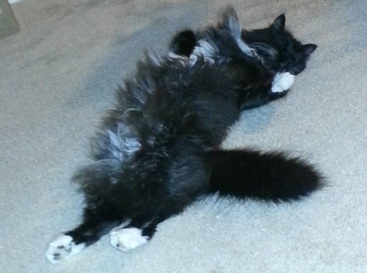 I can't believe it's been a year since my last post. I should be flogging myself, atoning for my sins against content creation. Or should I? I've been incredibly busy developing content and content marketing strategy for a couple of great B2B startups in the Silicon Valley. I'd like to share some of the insights I've gleaned from an intensive year of learning, leading, and skills-honing. 1. Content creation is not content marketing When I started my current role, I must admit I was a little overwhelmed at the rapid pace at which our team was turning out content. We were publishing left and right — white papers, analyst reports, blog posts, infographics, videos — everything was on an unrealistically tight editorial schedule and carried with it a sense of urgency. It was hard to tell which projects took priority, and it was my job to make sure they all got out the door on time and with quality. It sounds like an insurmountable task, but what you might not know about me is that I live for a deadline. My first marketing job was as an intern at a newspaper. I cut my teeth on deadlines every 24 hours. If something wasn't ready on time, it didn't get printed. Period. And if it didn't get printed, heads rolled. Stressful? You betcha. But I loved it. When I finally got a chance to catch my breath, I asked my new boss why we were creating all this content so frantically. She explained that we'd agreed to complete certain projects within that quarter, so we needed to get them done. But, I wanted to know why we'd agreed to do those particular projects. What was the rationale behind choosing to do a white paper on a particular topic, or commission a study on another? I asked her to explain the team's process for deciding what content to create and when to create it. Moreover, what did we plan to do with this content once it was done? She said to me, "You're asking all the right questions." I think that we, as content creators, can easily get bogged down with all the moving parts — researching, writing, designing and procuring the graphics, editing, perfecting, publishing — and we can forget the strategic reasons behind what we're creating. That's why content marketing leaders need to have a seat at the strategic planning table. We need to know the business case for each piece of content we're being asked to develop, which persona we're targeting, how we're distributing the content, and what the goals are for each item. Are we creating a gated asset that's designed to drive leads, or a helpful infographic highlighting industry trends and statistics? Whose attention are we trying to get, and what do we want to tell them once we have it? It takes time to answer these questions and develop a plan for each piece of content, but it's time well spent. It may mean that you're creating less content, or publishing less frequently, but you'll be creating better quality content. And with content marketing, quality matters more than quantity (although I know a couple of CMOs and sales leaders who would argue with me on that). 2. Square pegs don't fit in round holes (and forcing the issue is not pretty) It's important to communicate to your content creators, early on, the intended purpose of the piece they're being asked to create. When they begin with the end in mind, they'll be able to develop something that seamlessly fits into its medium and aligns with business goals. I recently had an experience where a writing team composed a very well-researched, well-written blog post geared toward the techie audience of Slashdot, Spiceworks, and DZone. Unfortunately, what we needed was a post written for the business audience of Forbes and InformationWeek. They'd spent weeks writing their post, only to be told two days prior to the publication date that it needed to be reworked. We tried editing it so that it spoke to a broader audience, but it still wasn't quite right. I told the writers that perhaps we were trying to meet too many needs with this one article — appeal to two different audiences. They saw that the changes we were asking them to make would have made it an entirely different article, which they weren't willing to turn out on such short notice. We decided to publish the post as-is and work on the other article separately, because trying to get one piece to do too many things would have resulted in an article with a muddied message that probably wouldn't have gotten picked up by anyone. (The article did indeed get picked up by Slashdot et al, and is performing very well, proving that this was the right call to make.) 3. Demand generation and lead generation are two different things This goes back to my point about not trying to make something into something it's not. Demand generation is about creating demand in the marketplace for what your business is selling. Lead generation is about drumming up leads for the sales team. These two functions are commonly confused; many marketing and sales leaders I know mistakenly use "demand gen" as an umbrella term to refer to all of these activities. It's an important difference. Content teams should be able to write copy that converts for landing pages, SEM banners, and outbound emails, as well as compose in-depth thought leadership content for inbound marketing. They're different skill sets, and the best content marketers will be able to develop both types of copy. But it would be a mistake to think that lead gen and demand gen copy should be written the same way. It takes a bit of left brain/right brain switching, but if you can figure out how to be that nimble, you'll be invaluable to your team. 4. Great content takes a village Startups are scrappy, and the less VC that's been raised, the scrappier they are. Those working on lean and agile teams sometimes compromise quality for just getting something done. But you do what you can with what you've got. I've worked mostly on very small teams — usually only two or three people, including me. It was a great way to develop a wide variety of skills: writer, editor, graphic designer, photographer, videographer, strategist. But when I joined my current team, which is much larger than I'm accustomed to, it was a little hard for me to let go of the reins at first. I quickly learned that the collaboration of several people on a project resulted in a much better piece of content than I ever could have created on my own. Having an expert designer and copyeditor at my disposal freed me up to be more strategic in my thinking, give better creative direction, develop a more thoughtful content promotion plan, and ultimately execute a killer asset. 5. Being an introvert can be a good thing Most startups embrace the modern open office floor plan: no offices, no cubicle walls — just long tables, maybe some couches and beanbag chairs, where people park themselves to work on their laptops. Conversations happen at full volume right out in the open, and there's usually a ping pong table, bar, café, or some other corner where people gather to loudly blow off steam. Personally, I can't stand it. I do my best work at home, where I can write and strategize in a peaceful environment with a cup of tea and a kitty by my side. But, since I have to be in the office most days, I've found ways to create quiet spaces for myself where I can think. I'll squat in an empty conference room, find an isolated corner, and, when there's nowhere else to go, I'll sit at my desk with my earbuds in, trying to drown out the noise with the likes of VNV Nation, Assemblage 23, and Infected Mushroom. My introversion has been taken for withdrawal, shyness, antisocial behavior, or a dull mind. None of that is true; I'm just in my head a lot, processing and analyzing things. But, I've learned the importance of perception management. I used to apologize for my introversion, but I've come to embrace it and, ironically, wear it on my sleeve. I've become, in a sense, extroverted about my introverted nature. I keep this infographic posted at my desk, and I let people know, "Hey, it's not that I don't like you, I just require a different kind of environment to do stellar work." I also know when to put on my extrovert hat — usually in meetings, which is why meetings drain me of my essential life energy. I'm a principled person, someone with a deep sense of ethics (hence the journalism degree instead of the MBA), and a defender of justice. When I feel that something is going in the wrong direction, I speak up. And when that happens for the first time in a new-to-me company, people are invariably surprised that I have a voice. I've found that there's room — no, a need — for that kind of voice in a marketing organization, to keep our activities from skewing to the evil and unethical. Journalists are joining marketing teams in droves, for the betterment of business, in my opinion. We provide balance to the sales-driven decisions about what content to create, and our contributions result in companies creating content that is valuable and helpful to customers and prospects, rather than just being gimmicky and "salesy". Those of us who are both journalists and introverts can be a powerful force on our teams; we just have to remember to be vocal about what we need in regards to a work environment, and speak up when necessary to keep our content marketing activities honest. Attending a good conference leaves you feeling energized, full of ideas and new contacts, exhausted, and—hopefully—with a good story or two. Social Media Marketing World 2014 in San Diego didn’t disappoint. On the first morning of sessions, I met a lady named Cheryl Viirand. Cheryl runs a website called Freedible.com, which is an online community for people who have eating restrictions. There are recipes, blogs and forums for people to connect and share. This sparked my interest, not only because of my love of nutrition, but because my mother was diagnosed with multiple food allergies last year. One of her most severe allergens is eggs. She’s had to learn to read food labels very carefully, because eggs are an ingredient in so many things. Cheryl encouraged me to tell my mom about her site, and suggested that I sign up, too. After eating my vegan lunch that day, I created my Freedible account and emailed my mom about it. As I was live tweeting in an afternoon session, I saw a tweet from @soymeetsgirl (whose real name is Stephanie) about the great lunchtime conversation she had about how vegans are connecting on social media. That reminded me of my conversation with Cheryl, so I connected the two of them in a tweet. Stephanie suggested we all meet for dinner, and that’s when things took off. I had made reservations for two at Jsix Restaurant weeks in advance via OpenTable. I knew restaurants would be booking up around that time, and even though I was attending the conference alone, I wanted to make sure I had a reservation in case a networking opportunity arose. I’d never been to Jsix, but the menu looked great: locally sourced, sustainable, farm-to-fork style food and an incredible selection of craft cocktails. I invited Cheryl and Stephanie to join me, and I used the OpenTable app to change my reservation to three people. Stephanie invited friends. I changed the reservation to six people and included a note saying that there are some vegans in our group, and asking if they could accommodate our dietary needs. Someone from the restaurant called and left me a voice mail confirming the reservation change and saying that although there aren’t many vegan options on the menu, that the kitchen could work to make a custom meal off menu. Stephanie’s friends invited some of their friends, and I changed the reservation to nine people, mentioning that there would also be a diabetic in our group. Again, Jsix said there would be no problem in accommodating us. We all agreed, via Twitter, to meet at the concierge desk at 5:45. As I waited at the concierge desk, I realized that Cheryl was the only one I would recognize. I also realized that of the group, Cheryl is the only one who would recognize me! (You can only tell so much from an avatar.) So I asked the concierge for a piece of paper and a marker. I made this sign and held it up like a limo driver at an airport. I got lots of looks from people walking by, and I think I sparked a Twitter meetup between people who needed dinner reservations and those who had extra room at their tables. But, I wasn’t finding my group. So I asked the concierge to take a photo of me holding the sign and I tweeted it to them. Within minutes, we were all shaking hands and making introductions. Two people on the Twitter thread couldn’t make it because they had to do a Google Hangout, so the remaining seven of us caught an Uber to Jsix (on the corner of J and Sixth Streets, get it?). Upon entering the restaurant, the hostess greeted us with, “You must be the Heidi Willbanks group. Welcome! We have some sparkling wine for you.” There, on the broad wooden host stand, was a glass of bubbly for each of us. What a delightful surprise! Here we are, sharing a toast. Left to right: Becky Scott, Jennifer Boyd, Stephanie Garcia, Cheryl Viirand, Elliott Shaw, Rachael McGovern, and me. Our server, Jason, was delightful as well. Cheryl handed him a card that listed her dietary restrictions. With a smile, he said, “No problem. I’ll take this to the kitchen and the chef and I will put our heads together to create a special meal just for you.” And they did! She was very pleased with her dinner, and told me that she often ends up with restaurant meals that appear to have been made for a child. This was sophisticated: a frisée salad with hemp seeds, a perfectly cooked beef entrée. She said, “This is real food, not ‘substitute food.’”
For two hours, we nibbled, conversed, and enjoyed cocktails made with unusual ingredients like salted orgeat syrup, bacon and cayenne (not all in the same drink). It was wonderful getting to know this group of like-minded social media geeks. It was an unforgettable, unique experience that led me to make professional contacts and friends I’ll keep for a long, long time. by Heidi Willbanks 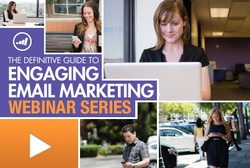 I attended part one in Marketo's webinar series on engaging email marketing Monday morning. There were a ton of great insights shared, and I thought it would be helpful to compile a summary of the highlights as shared on Twitter via #DG2EEM. Join part two of the Definitive Guide to Engaging Email Marketing Webinar Series on 9/4 at 10am PT. In the meantime, download the guide here.
by Heidi Willbanks  Photo by Nomadic Lass Photo by Nomadic Lass Last week I spent some time catching up with my old friend Joe. We met up in Oakland and took BART into San Francisco, hopped on a cable car and wound up at Bowie & Burlesque night at the Red Devil Lounge. (Oh, how I love the Bay Area!) We began discussing work as we walked from the cable car stop to the bar. Among other things, Joe is a freelance photographer--a very good one at that. He said that he really needs to spend more time building his business, but that it's hard when you're the one who has to do all the work. Not only are you the talent for hire, but you have to be accounting, sales, marketing and webmaster, too. Boy, don't I know it! I asked him what he was doing to optimize his online presence--not for the purposes of pitching my business, but just as a friend having a dialogue. He seemed to know what I meant, so I pressed on about social media. He understands Facebook and Twitter, and he has been told he should probably get on Pinterest, but doesn't know much about it. (Which, btw, is a FANTASTIC idea for a photographer, since Pinterest is so graphics-driven.) But when I used the term SEO, he asked, "What's SEO?" I forget sometimes that not everybody knows what I'm talking about when I discuss what I do for a living. We spend so much time working--whatever our fields--that often our business vernacular threatens to become our primary language. This was a great opportunity for me to practice explaining SEO in lay-person's terms. This is pretty much how the conversation went: I said, "You want your business to come up when people search for photographers in Oakland and San Francisco. Right?" "Yes," replied Joe. "But specifically, I want to photograph gay weddings. LGBT weddings." "Great!" I exclaimed. "You've defined a niche! And one that is likely to be in high demand now. Well, SEO stands for search engine optimization. It's basically a bunch of stuff you can do to optimize your website to show up in search engines when someone searches for a business like yours. But it's not just your website. It's social media, too. It's your Facebook page, your Twitter feed, your blog if you have one, and--yes, Yes, YES!--your Pinterest boards." The light bulb began to flicker on. "But, I don't know how to do all that stuff," he said. I smiled. "Well, that's why you need me. But, I know you can't afford to hire me, so I'll just give you a little piece of advice for free. Get on Pinterest, but don't just put up a board with your whole gallery on it. A gay male couple in search of a wedding photographer is going to be looking for something different than what a lesbian couple is. A cisgender/transgender couple may want something else. You know this community. You know your audience. Think of all the different ways you can slice and dice that audience, and make a separate board for each. Then, cross-promote those boards on other social media, targeting the right group for each." By this point the light bulb was shining brightly above his head. "Oh, I can do that!" he realized. And so can you. Would I like you to hire me? Sure. But most of all, I want you to be successful. So, if you don't have the knowledge or the budget for full-blown expert search & social marketing, just think about what you can do to target the people you're trying to reach. Segment. Break it down. Be specific. Be relevant. by Heidi Willbanks Pinterest is all the rage these days, seemingly having gone from zero to hero overnight. Created in March 2010, Pinterest is now a major player in social media, promoting blogs and businesses. With its simple way of collecting and organizing your favorite things across the web, it lets users create elegant virtual pinboards in different categories: recipes to try, interior decorating ideas, wedding flowers--anything you can think of.
While at first glance it seems to cater mostly to e-commerce (basically creating shopping wish lists), some people are finding outside-the-box ways to use Pinterest. For instance, self-proclaimed "social scientist" Nicola Ziady gathers and shares great social media-related material on her pinboards (and if you're into social media, you should definitely follow her). The late astrophysicist Susan Niebur created a "Women in Planetary Science" pinboard, which is now maintained by astronomer Erin Ryan. According to TechCrunch, Pinterest has more than 10.4 million users (an overwhelming majority of them women). Social media marketing blog Grow calls Pinterest the "natural evolution of social media." It's visual in nature, quick to click and doesn't require reading or thinking. Which, given how inundated I am by words and thoughts on a daily basis, is partly why I love it so much. To sign up, you must request an invitation from Pinterest or be invited by an existing Pinterest user. by Heidi Willbanks  Danny Sullivan moderates. Photo by Dana Lookadoo. Danny Sullivan moderates. Photo by Dana Lookadoo. I feel like I’m back I’m college. I’m attending a three-day search marketing conference in San Jose. It’s day two and my fellow conference-goers and I are all walking around in a bleary-eyed haze. At the end of a very long day yesterday, my brain was full, my feet were sore and I wondered how I managed to get through years of college where every day was just like that. I have been out of school for a little more than five years. This is the first time since then that I have been in such an intensive learning environment. My brain is soaking up the information like a sponge, and I’m so happy that I still have the capacity to learn new things. SEO and social media are things that until yesterday I had only grazed the surface of. Now I’m in the deep end, and I’m proud to say, I’m treading water pretty well. Not swimming just yet, but I believe I can get there. by Heidi Willbanks  Photo by Bill Dickinson Photo by Bill Dickinson I know people who refuse to eat alone at restaurants. They say it's because they think people will look at them funny, or they'll feel lonely and insecure. I, for one, have never seen someone alone at a table and thought, "What a loser. Nobody wants to eat with them." For the most part, the people I see eating by themselves appear to be travelers or professionals stopping to relax and have a bite to eat. But really, it's none of my business why they are unaccompanied, so I try to refrain from judgement. Sometimes I take myself out when I'm working long hours or on a leisurely day off. Last Friday, I spent my lunch hour at a nice restaurant near my office. It had been a tough week. I had worked hard, juggling multiple projects and tight deadlines, and the stress was starting to wear on me. I felt I deserved to treat myself. So I walked in, got seated at a table with a view, and enjoyed a good meal, a bottle of Pellegrino and an hour of serenity. It was nice sitting there, enjoying the cumulative buzz of chatter, silverware and ambient music. As I munched on my turkey sandwich, I gazed out the window at passersby with dogs, strollers and shopping bags, and felt thankful that I was not out there with them, running around and getting things done. Sated and relaxed, I returned to the office for the last half of the last day of an unbelievably hectic week. There is something liberating about dining out alone. Maybe it isn't for everyone, but sometimes I find peace in a table for one. |
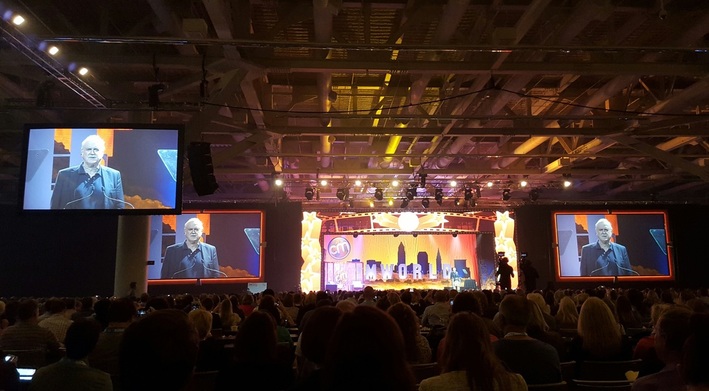

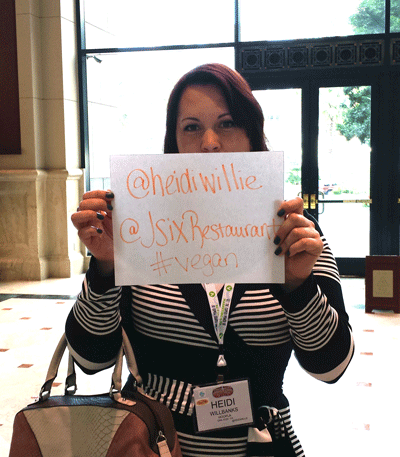
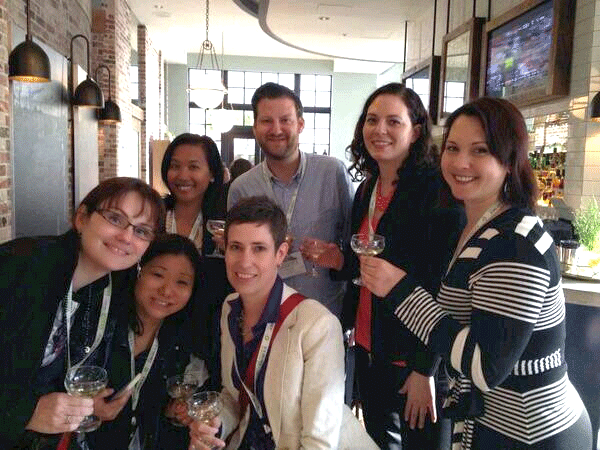
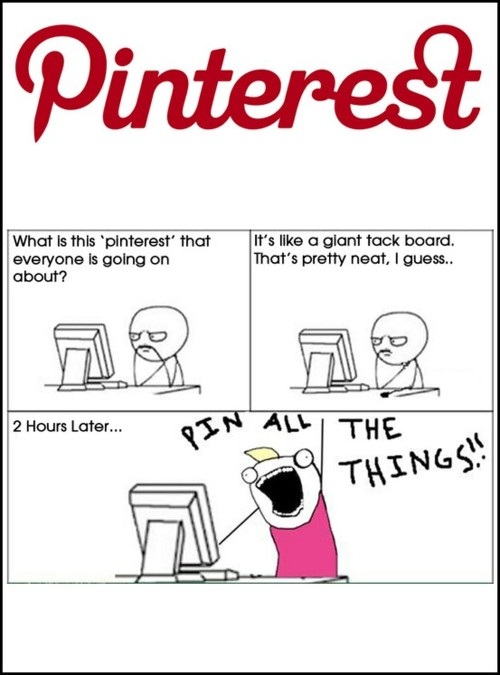
 RSS Feed
RSS Feed